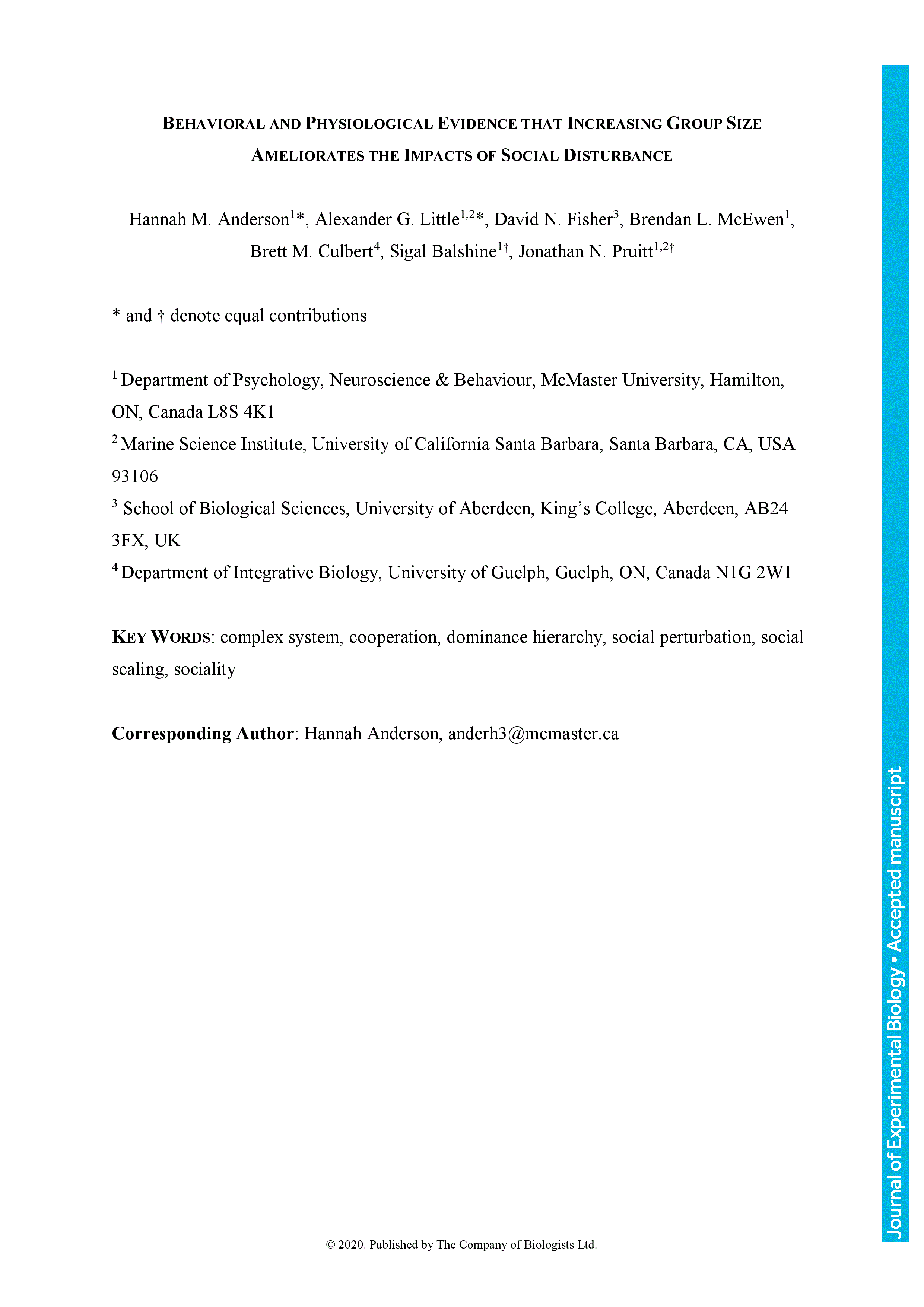Intra-group social stability is important for the long-term productivity and health of social organisms. We evaluated the effect of group size on group stability in the face of repeated social perturbations using a cooperatively breeding fish, Neolamprologus pulcher. In a laboratory study, we compared both the social and physiological responses of individuals from small versus large groups to the repeated removal and replacement of the most dominant group member (the breeder male), either with a new male (treatment condition) or with the same male (control condition). Individuals living in large groups were overall more resistant to instability but were seemingly slower to recover from perturbation. Members of small groups were more vulnerable to instability but recovered faster. Breeder females in smaller groups also showed greater physiological preparedness for instability following social perturbations. In sum, we discover both behavioral and physiological evidence that living in larger groups helps to dampen the impacts of social instability in this system.
Behavioral and physiological evidence that increasing group size ameliorates the impacts of social disturbance
denote equal contributions
Currently Viewing Accepted Manuscript - Newer Version Available
Hannah M. Anderson, Alexander G. Little, David N. Fisher, Brendan L. McEwen, Brett M. Culbert, Sigal Balshine, Jonathan N. Pruitt; Behavioral and physiological evidence that increasing group size ameliorates the impacts of social disturbance. J Exp Biol 2020; jeb.217075. doi: https://doi.org/10.1242/jeb.217075
Download citation file:
Advertisement
2023 JEB Outstanding Paper Prize shortlist and winner

The JEB Editors are delighted to announce the shortlisted authors for the 2023 JEB Outstanding Paper Prize. Read the winning paper - Tiny spies: mosquito antennae are sensitive sensors for eavesdropping on frog calls - by Hoover Pantoja-Sanchez and Brian Leavell from Ximena Bernal's lab at Purdue University, USA.
JEB Science Communication Workshop for ECRs

If you’re an early-career researcher interested in science communication and are attending the SEB Annual Conference in Prague this summer, come a day early and join the JEB Editors at a sci comm workshop to learn the key writing skills needed to promote your research to a broad audience beyond your peers (1 July at 14.30-17.30). Places are limited to 24 attendees, and applicants should apply through the SEB registration page by 30 April 2024.
Bridging the gap between controlled conditions and natural habitats in understanding behaviour

Novel technologies enable behavioural experiments with non-model species, in naturalistic habitats and with underexplored behaviours. In their Commentary, Scholz and colleagues discuss how to obtain a deeper understanding of the natural ecology and lifestyle of study animals.
Beluga metabolic measures could help save species

To help save animals from extinction, it’s important to understand what each species needs to survive. This led Jason John et al. to measure the metabolic rates of captive belugas to develop a ‘fish calculator’ showing that the whales need to eat ~23 salmon per day.
ECR Workshop on Positive Peer Review

Are you an ECR looking for tips on how to write concise, astute and useful manuscript reviews? If so, join the JEB Editors at a 2-hour JEB-sponsored Workshop on Positive Peer Review at the Canadian Society of Zoologists annual meeting in Moncton on 9 May 2024 at 13.00-15.00. There are 25 spaces for ECRs and selection is first come, first serve. To sign up, check the ECR Workshop box when you register for the CSZ meeting.



